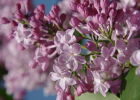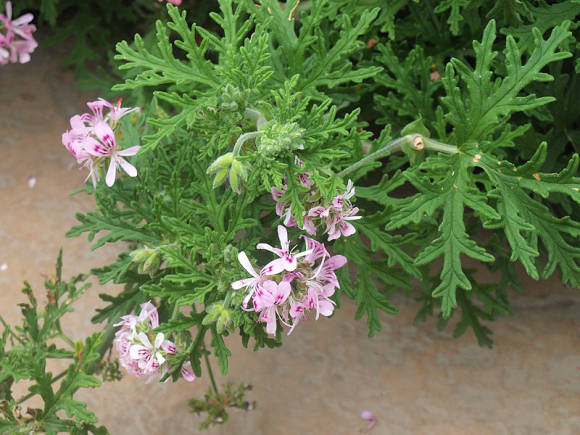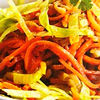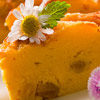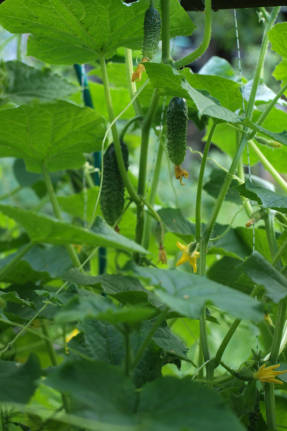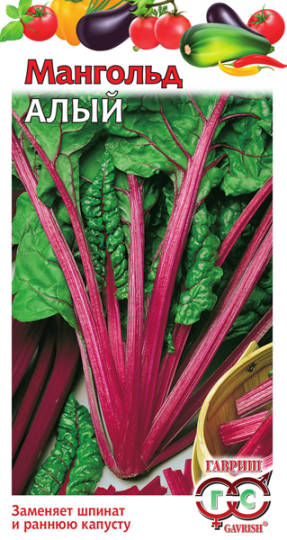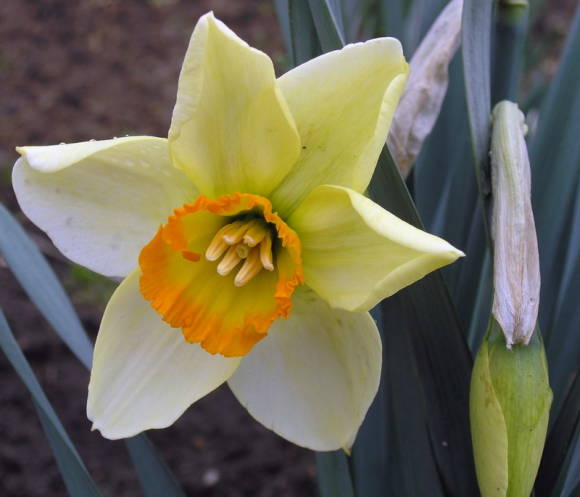
Hawthorn is an old remedy for palpitations, insomnia, and high blood pressure. It is believed that the hawthorn was already known to Dioscorides, who used it for heart ailments. In the Middle Ages it was used for gout, Lonicerus was used for stones, colic and diarrhea, and Mattiolus for kidney stones, women's problems. Perhaps the first who publicly announced the effectiveness of hawthorn as a heart remedy was G. Madaus, a German herbalist.
It so happened that historical information about the use of hawthorn often does not specify what kind of specific species we are talking about. Meanwhile, there are a lot of hawthorns, more than 50 species grow on the territory of the CIS countries alone. But as practice has shown and numerous and long-term studies, despite the differences in chemical composition, many species are interchangeable.
In our country, the main species used in medicine is blood red hawthorn, or, as they often write, blood red (Crataegus sanguinea Pall.), which is widespread in the eastern half of the European part of the country and practically throughout Siberia, is widely used for landscaping cities and for planting forest belts.
In European countries, monopestile hawthorn is used for the preparation of finished dosage forms (Crataegusmonogyna), prickly hawthorn (Crataegus oohacantha syn. Crataeguslaevigata). As a raw material, according to the European Pharmacopoeia, the harvesting of flowers and leaves of some more species is allowed: black hawthorn (C. nigra), hawthorn (S. pentagyna) and hawthorn azarole (C. azarolus).
Flowers and fruits

Hawthorn flowers and fruits are used as medicinal raw materials. Flowers are harvested in May at the beginning of flowering. Collection must be carried out in dry weather. Otherwise, the raw material dries poorly and has no presentation. The collected raw materials are laid out as quickly as possible in a thin layer on paper or tarpaulin in a well-ventilated attic. It is undesirable to stir up the flowers - at the same time they crumble and the finished "product" begins to resemble dust. In order to check if the raw material is dry, crush the bud - it should crumble, not crush.
The fruits are harvested when ripe, plucking off the entire scutellum, and then the stalks, unripe fruits and leaves are removed. They are dried in an oven or dryer at a temperature of 50-600C. The shelf life of raw materials is 2 years.
In the European Pharmacopoeia, flowers with leaves are mentioned as raw materials. And the Homeopathic Pharmacopoeia of Germany uses fresh fruits as raw materials.
The action is one, but the composition is different
The chemical composition of flowers and fruits is significantly different, but, nevertheless, both are used in diseases of the cardiovascular system.
Hawthorn flowers have a high content of essential oil (1.5%), which makes them more effective and better for treating functional disorders of the heart. In addition, they contain tannins (2.9-9.6%), flavonoids (acetylvitexin, hyperoside, quercetin, vitexin, bioquercetin, pinnatifidin, 8-methoxykempferol). Blood-red hawthorn flowers have a high content of potassium (32.1 mg / g) and magnesium (3.4 mg / g), which are very important for the normal functioning of the cardiovascular and nervous system.
The biochemical composition of fruits of different hawthorn species is somewhat different, but in general they contain 4-11% sugars (mainly fructose), 0.26-0.93% malic acid, 60-180 mg% triterienic acids, 0.59-0, 61% pectin, 0.84-1.73% tannins and dyes, about 3.4% coumarins, including oxycoumarins, which reduce the prothrombin index. In addition, they contain up to 25 mg% ascorbic acid, 380-680 mg% vitamin P, 2-14 mg% carotene, and in some species up to 5% vitamin E. Dried fruits are rich in sorbitol (up to 22.5%), and in Central Asia, in a ground form, they are added to the dough of flat cakes.
In the flowers of the hawthorn, about 2.5% of flavonoids are present, including hyperosil (0.7%), flavones, as well as procyanidins (3.7%), caffeic and chlorogenic acids, triterpenic acids.

The fruits of prickly hawthorn contain triterpenic acids (0.45%), including ursolic and oleic acids, p-sitosterol, chlorogenic and caffeic acids, saponins and flavonoids. In addition, hyperoside, hyperin, tannins, sorbitol, choline and fatty oil were found. The leaves contain chlorogenic and caffeic acids; in flowers - ursolic, oleanolic, caffeic, chlorogenic acids, quercetin, quercitrin and essential oil, up to 0.16%. The seeds contain the glycoside esculin (crategin). The leaves of hawthorn five-pistillate contain flavonoids, saponins.
Comparative study carried out hawthorn (C. caucasica), b. eastern, b. small-leaved (C. microphylla), b. false-leaved (C. pseudoheterophylla),b. Meyer (S. meyeri),b. Shovitsa (C. szovitsii), b. five-pistillate (S. pentagyna), b. hairy (C. eriantha). A phytochemical study showed that the five-pistillate hawthorn in chemical composition is closer to the Caucasian hawthorn and contains alkaloids, glycosides, essential oils, resinous substances, sugars, fatty and tannins, bitterness and B vitamins. In hawthorn flowers, in contrast to fruits contains the largest amount of essential oils. In terms of its action on the heart and hypotensive properties, the five-pistil hawthorn was the most active. The sum of saponins was isolated from the dried fruits and leaves of the five-pistil hawthorn, and the sum of flavonoids and anthocyanins was isolated from fresh hawthorn fruits.
Pharmacological properties
Experimental studies on animals have shown that hawthorn extract has a stimulating effect on the heart and at the same time reduces the excitability of the heart muscle, in high concentrations it expands the peripheral vessels and the vessels of internal organs. Ursolic and oleanic acids contained in hawthorn increase blood circulation in the vessels of the heart and brain, lower blood pressure.
The commonly observed baldness in cholesterol-fed rabbits was less pronounced with hawthorn treatment. In the study of internal organs, it was found that in rabbits that were simultaneously injected with cholesterol and hawthorn preparations, aortic lipoidosis after hawthorn was significantly less pronounced than in control animals that were given only cholesterol.
Fruit extract hawthorn(Crataegus pentagyna) after a single injection, it decreased the bioelectrical activity of the frontal and occipital regions of the cerebral cortex in rabbits. With daily administration of the drug for 5 days, the decrease in bioelectrical activity on the EEG was more noticeable; these changes on the EEG gradually decreased within a few days after the termination of the administration, which indicates a prolonged sedative effect of hawthorn.
The preparations of the plant tone up the work of the heart, increase heart contractions, normalize blood pressure, have an antispasmodic and sedative effect, and normalize the work of the heart. When they are used, a deep and restful sleep occurs. Strengthening and weakening the action of drugs depends on their dosage. Any derivatives of hawthorn are non-toxic and do not cause side effects.
Heart friend

The use of hawthorn in medicine is due to the wide spectrum of its action on the human body, without giving any side reactions in therapeutic doses. Indications for its use are atrial fibrillation, paroxysmal tachycardia, cardio- and angioneuroses. These diseases manifest themselves in the form of heart pain, arrhythmias, vascular spasms, shortness of breath and insomnia.In medicine, flowers and fruits of blood-red hawthorn are used (in addition to this species, flowers and fruits of another 5-6 species of hawthorn are permissible for harvesting) as a cardiotonic and blood circulation regulating agent. Hawthorn is recommended for circulatory insufficiency in elderly people, especially in diseases of the climacteric period, with atherosclerosis and cardiac neuroses. In heart failure, hawthorn is often an adjunct to digitalis medications. Clinical trials have confirmed the effectiveness of hawthorn preparations for coronary heart disease and hypertension. The French phytotherapist A. Leclerc, on the basis of more than 20 years of experience in using the drug, claims that the absence of any toxic effect with prolonged use of hawthorn allows it to be prescribed even to patients with impaired renal function, without fear of cumulation.
However, it should be remembered that even hawthorn overdose can cause side effects.After large doses (over 100 drops of hawthorn tincture), the pulse slows down and the central nervous system is depressed. Therefore, hawthorn is contraindicated in bradycardia, that is, a slow heartbeat.
Most often, hawthorns are used for coronary insufficiency with symptoms of angina pectoris, as well as hypertension, atherosclerosis, increased excitability, loss of consciousness, and an acute form of articular rheumatism. Infusions of flowers and fruits help with climacteric neuroses. The fruit infusion exhibits a noticeable antioxidant and anti-inflammatory effect, due to which it is sometimes used in folk medicine for joint inflammation.
Practice has shown that hawthorn is effective as a remedy for tachycardia, nervousness and increased excitability in thyrotoxicosis.
Using hawthorn leaves also makes sense. So, they have high P-vitamin activity and the content of bioflavonoids responsible for this action reaches 4-5%.
Often hawthorn flowers and fruits are added to medicinal teas and collections. The most effective preparations are made from fresh flowers.
Tincture of flowers. 10 g of fresh flowers are poured with 100 ml of 70% alcohol and insisted for 2 weeks. Filter and drink 15-20 drops per glass of water, 3 times a day. When using tincture as a sedative, the dose is increased by 2-3 times.
Infusion of flowers. 1 tablespoon of flowers (dry) is poured with 200 ml of boiling water, insisted until cooled, drink 1/2 cup 2-3 times a day.
Tincture of fruits. 10 g of dry crushed fruits are infused in 100 ml of 70% alcohol for two weeks, filtered and taken in 30-40 drops in a glass of water. Hawthorn berries are especially useful for patients with diabetes mellitus.
Infusion of fruits. 1 tablespoon of dry crushed fruits is poured with 200 ml of boiling water, insisted until cooled, filtered and drunk ½-1/3 cup 2-3 times a day.
Adding 1-2 tablespoons of hawthorn per 1-2 liters of product to dried fruit compote will turn the drink into a medicinal one.
With arrhythmia the following recipe is recommended: take 20 g of flowers, leaves and fruits of any kind of hawthorn, pour 10 g of 70% alcohol, leave for 2 weeks in a dark place. Take 15 drops on a lump of sugar 3-5 times daily before meals. After a week of admission, take a break for 3 days. If it is not possible to prepare an alcoholic tincture, then take 1 tbsp. a spoonful of dried hawthorn flowers, pour a glass of boiling water, leave for 2 hours and drink in two doses before meals.
With glaucoma take equally hawthorn and chamomile flowers, olive leaves, thyme herb. 5 g of the mixture pour 1 liter of boiling water, boil for 1 minute, drink 10 g before meals and 50 g after meals 3 times a day.
Recommended in Germany with angina mix equally ready-made pharmacy tinctures of hawthorn, mistletoe and valerian. Take 20-30 drops 3 times a day. We do not have mistletoe tincture in our pharmacies.
In German folk medicine, an aqueous infusion and an alcoholic tincture of flowers and fruits are taken with weak heart work in old age, increased nervous excitability and insomnia. In a mixture with other plants, hawthorn is used for prostate adenoma and chronic prostatitis.
Hawthorn in oriental medicine

In Asia, the variety of hawthorns is no less than in the European part. And it is quite natural that oriental medicine also uses this wonderful plant, although mainly its own, local species and not only for heart problems, although with them too. Hawthorn fruits are used in Chinese and Tibetan medicine for impotence, and in Korea - as a tonic. In Korea, the fruits are used for chronic gastritis and loss of appetite, with excessive thinness in children. Korean phytotherapist Choi Taesop focuses on vasoprotective action, that is, keeping blood vessels in good condition.
In Chinese medicine, pinnate hawthorn (WITH. pinnatifida) and believe that it not only normalizes blood pressure, but also improves digestion. Its fruits are prescribed for constipation, a feeling of a full stomach, and bloating. According to Chinese doctors, it approaches the meridians of the spleen, stomach and liver. In traditional Chinese medicine, it is combined with very different plants, such as celandine, licorice, elecampane.
In Mongolian medicine, hawthorn is considered an effective remedy for diseases of the hepatobiliary system. In combination with other plants, it is used for diseases of the liver and gallbladder.
Indian medicine combines hawthorn with spices (in particular with cinnamon), which are also useful in old age for circulatory disorders.
